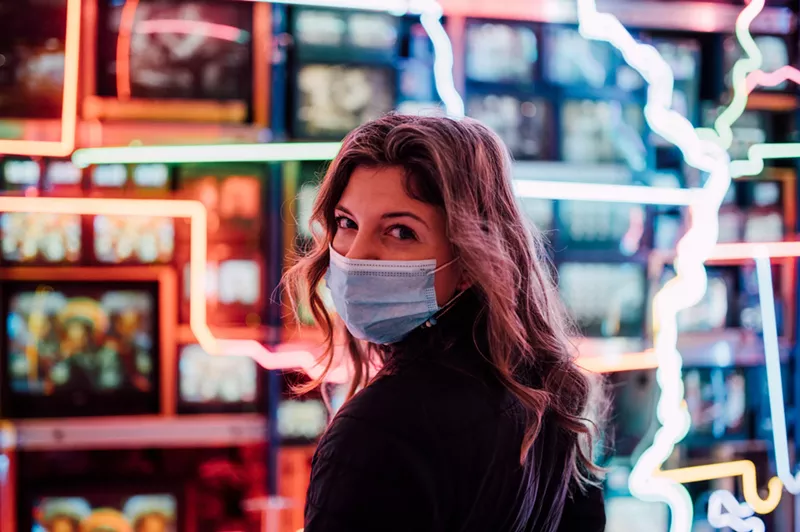So, we’re sorry to say that you might want to dig out your favorite lockdown-era mask: COVID-19 is on the rise again in Dallas County.
Last week, Dallas County saw 626 new cases, and the previous week logged 494, Axios reported on Monday.
Dr. Philip Huang, director of the county’s health department, described the tally of cases as having increased slightly but not significantly. The number of hospitalizations has also remained relatively low.
“We're certainly not where we've been in the past,” he told the Observer.
The coronavirus is spreading elsewhere in Texas. For the week ending Aug. 12, cases spiked by 24% compared with the previous week, according to the state’s health department.
And the Centers for Disease Control and Prevention reports that the new coronavirus variant, EG.5, drove more than 17% of cases in the U.S. for the two-week period ending on Aug. 5. The World Health Organization recently declared that strain a “variant of interest.”
Even though cases have increased locally, experts want people to know that the worst of the pandemic is indeed in the rearview mirror. On May 11, the federal COVID-19 public health emergency declaration ended.
These days, the vast majority of Americans have developed COVID-19 antibodies.
Around 97% of people older than 16 have either infection- or vaccine-induced antibodies, Huang said. Although antibodies don’t necessarily stop infection, they do help to stave off severe disease.
Huang noted that a new coronavirus vaccine is expected to arrive in the coming weeks.
“Continue to be in ventilated areas,” Huang said. “It's never a bad idea to wear a mask if you're in a crowded setting and if you've been exposed, or stay home if you're sick.”
“It won't be the last time that most of us see something like COVID in our lifetime. It just won't.” – Dr. Erin Carlson
tweet this
COVID-19 hits some people harder than others, such as those who are immunocompromised, said Dr. Erin Carlson, clinical professor and director of graduate public health programs for the University of Texas at Arlington. The virus is now less virulent overall, meaning that it doesn’t make people as sick as it did in its original iterations.
Around 75% fewer COVID-19 cases have been reported in Texas this summer compared with last summer, she said. Overall, the situation is much more under control. Viruses tend to evolve to become more contagious but less dangerous, COVID-19 included.
Still, Carlson urges those who think they may be sick to look out for their vulnerable neighbors.
“Please be respectful and mindful of people who this would hit really hard, and do the things: Stay home if you can, wear a mask. Those kinds of things,” she said. What might seem like the minor inconvenience of wearing a mask "might save somebody who is immunocompromised from being very, very ill.”
Carlson encourages people to get the latest COVID-19 vaccine when it comes out, and to ask their healthcare provider if they’ll need a booster shot before then.
As COVID-19 continues to mutate, it will remain a focal point for public health experts, Carlson said. But there's a chance that we may start to see other viruses appear on the horizon.
“If you just look at the perfect storm that continues to rage, COVID was born of that perfect storm, and it's still here,” she said. “It hasn't changed.”
World health authorities are indeed sounding the alarm that another, even deadlier pandemic could hit sometime in the future.
Climate change has been cited as a factor in infectious disease outbreaks. As rains and flooding ramp up, and people and animals are forced into new habitats, it leads to the creation of dangerous new viruses, Carlson said.
Along with new viruses comes the risk of new diseases, and environmental changes may increase the likelihood of future epidemics. One 2021 study found that the probability of experiencing another coronavirus-like pandemic is around 38%, “which may double in the coming decades.”
“It won't be the last time that most of us see something like COVID in our lifetime,” Carlson said. “It just won't.”













